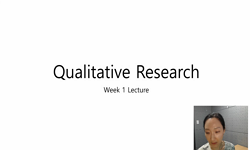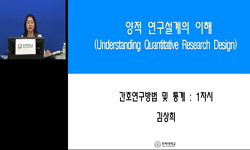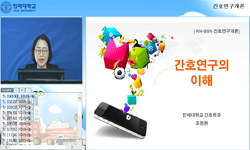This article illustrates the author’s personal account of examining her volunteer work as a sermon interpreter throughout her professional career spanning twenty years. What was the motivation behind this work? What meaning did it have in personal, ...
http://chineseinput.net/에서 pinyin(병음)방식으로 중국어를 변환할 수 있습니다.
변환된 중국어를 복사하여 사용하시면 됩니다.
- 中文 을 입력하시려면 zhongwen을 입력하시고 space를누르시면됩니다.
- 北京 을 입력하시려면 beijing을 입력하시고 space를 누르시면 됩니다.
https://www.riss.kr/link?id=A109093230
- 저자
- 발행기관
- 학술지명
- 권호사항
-
발행연도
2024
-
작성언어
English
- 주제어
-
KDC
717
-
등재정보
KCI등재
-
자료형태
학술저널
-
수록면
111-137(27쪽)
- 제공처
-
0
상세조회 -
0
다운로드
부가정보
다국어 초록 (Multilingual Abstract)
This article illustrates the author’s personal account of examining her volunteer work as a sermon interpreter throughout her professional career spanning twenty years. What was the motivation behind this work? What meaning did it have in personal, spiritual, and professional life? Through field notes, reflective journals, research memos, and self-generated memory data collected from April 2023, the worked example seeks to identify the motivations of volunteering, the meaning of work and vocation, and professional and spiritual identity work. The autoethnographic account shows how serving as a sermon interpreter aided identity work by meaning making of interpreting practice, not simply as a career choice, but as a spiritual calling (Lips-Wiersma, 2001). The solace that this self-awareness provides during times of inner conflict illustrates how “identification waxes and wanes as individuals and their contexts evolve” (Kreiner et al., 2006: 1032).
목차 (Table of Contents)
- 1. Introduction
- 2. Autoethnography as method of inquiry
- 2.1. Introducing autoethnography
- 2.2. Autoethnography in T&I studies: a viable option
- 1. Introduction
- 2. Autoethnography as method of inquiry
- 2.1. Introducing autoethnography
- 2.2. Autoethnography in T&I studies: a viable option
- 2.2.1. Narrative studies of self
- 2.2.2. Sociological approaches to T&I studies
- 2.2.3. Ethical considerations
- 3. Doing an autoethnography: a worked example
- 3.1. Researcher positionality
- 3.2. Getting started
- 3.3. Choosing a research focus
- 3.4. Collecting data
- 3.5. Data analysis, interpretation, and writing
- 4. Three autoethnographic vignettes
- 5. Discussion and conclusion
- References
동일학술지(권/호) 다른 논문
-
중한 기계번역 오류변화와 포스트에디팅 가이드라인에 대한 고찰 : 2021년-2023년 학부 수업사례를 중심으로
- 한국외국어대학교 통번역연구소
- 김혜림
- 2024
- KCI등재
-
법률 기계번역 포스트에디팅에 대한 경험과 인식에 관한 소고 : 번역사와 전공생 면접조사를 중심으로
- 한국외국어대학교 통번역연구소
- 이지은
- 2024
- KCI등재
-
관련성 이론의 관점에서 본 언어유희 번역 : 『이상한 나라의 앨리스』 번역을 중심으로
- 한국외국어대학교 통번역연구소
- 노은주
- 2024
- KCI등재
-
통역에서 비언어적 커뮤니케이션에 대한 고찰 - 설교 순차통역을 중심으로 -
- 한국외국어대학교 통번역연구소
- 신혜인
- 2024
- KCI등재





 eArticle
eArticle






